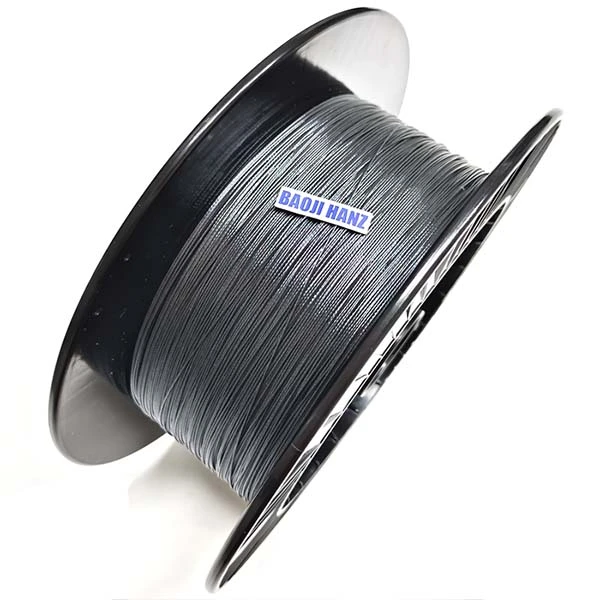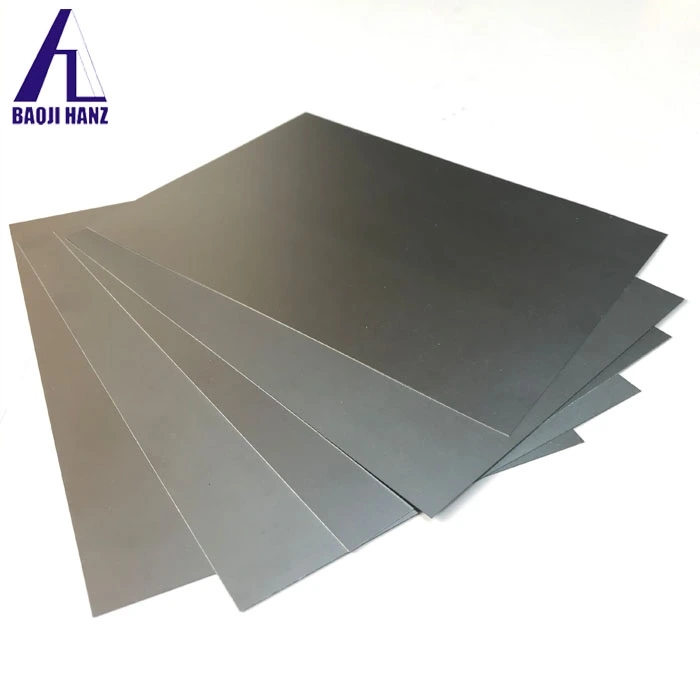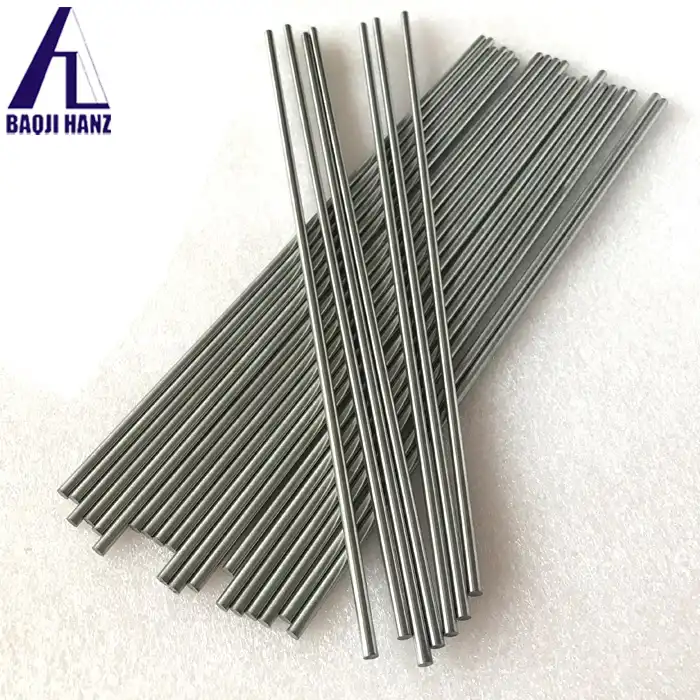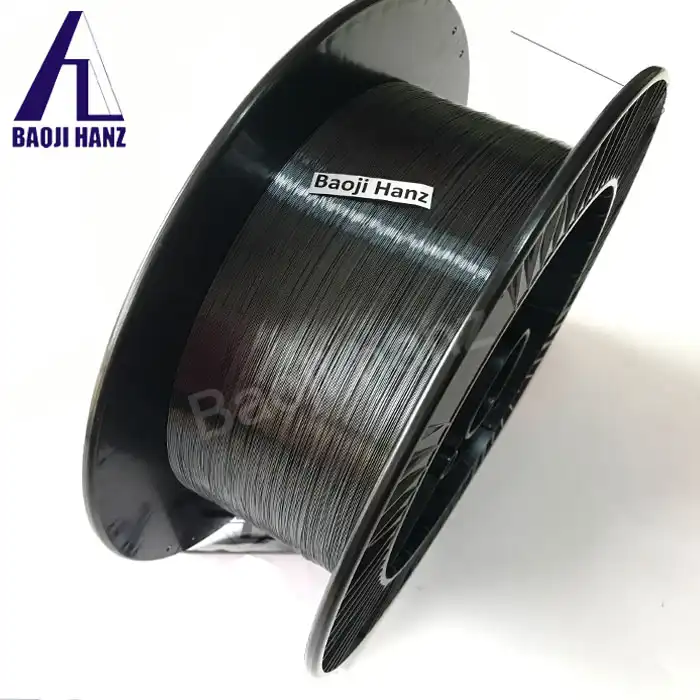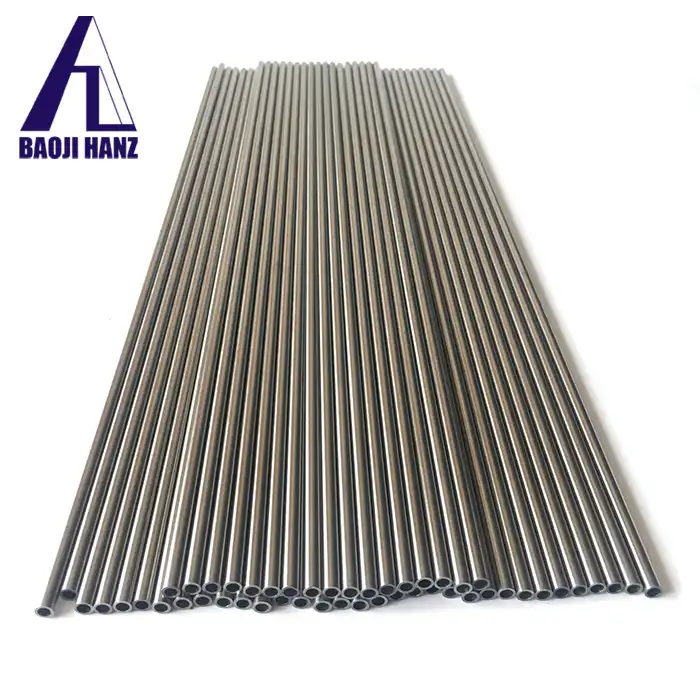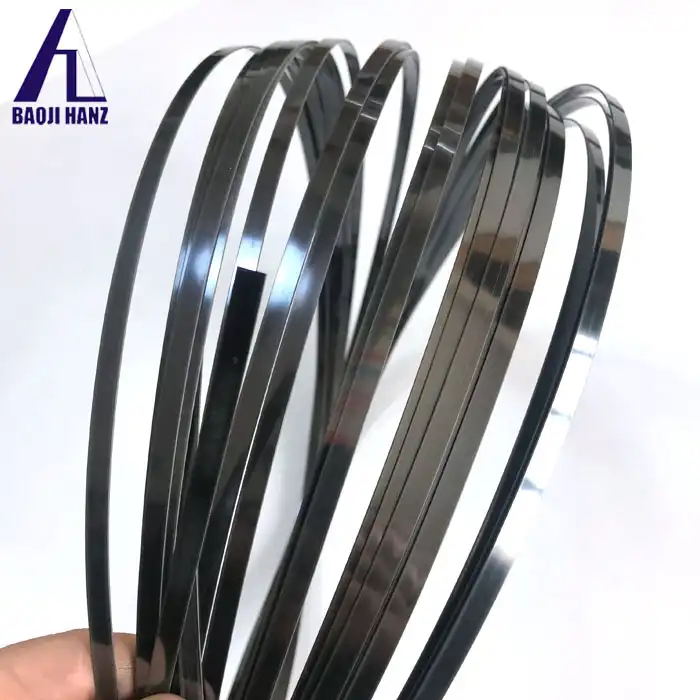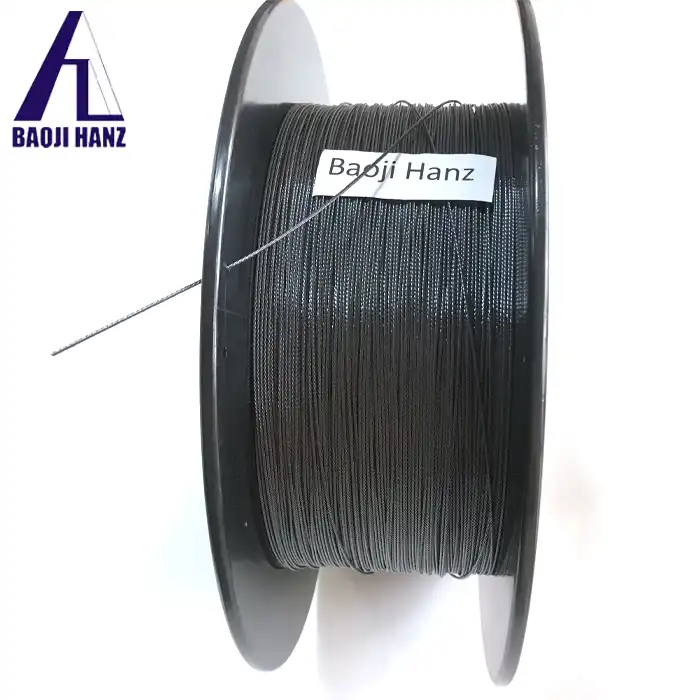How Does Memory Shape Titanium Nickel Rope Enhance Consumer Electronics Durability?
2025-03-26 21:38:13
Memory shape titanium nickel rope, also known as Nitinol rope, is revolutionizing the consumer electronics industry with its remarkable durability-enhancing properties. This advanced material combines the unique characteristics of shape memory and superelasticity to address many common durability challenges in modern devices. By integrating memory shape titanium nickel rope into components like charging cables, internal connectors, and structural elements, manufacturers can significantly extend product lifespan while improving performance under stress. The material's ability to return to its original form after deformation provides unprecedented protection against the daily wear and tear that typically leads to electronic device failure.
The Fundamental Science of Memory Shape Titanium Nickel Rope
Metallurgical Composition and Properties
Memory shape titanium nickel rope is a specialized alloy composed primarily of titanium and nickel in nearly equal atomic proportions. This unique metallurgical composition creates a material with exceptional properties not found in conventional metals. The alloy undergoes a reversible solid-state phase transformation between austenite and martensite phases, which is the foundation of its shape memory and superelastic behavior. Baoji Hanz Metal Material Co., Ltd. has perfected the manufacturing process of this memory shape titanium nickel rope through advanced research and development, ensuring precise control of the alloy composition. The material exhibits remarkable strength-to-weight ratio, with the ability to bear heavy loads despite its relatively lightweight nature. Additionally, its high fatigue resistance means it can endure repeated cycles of deformation without degradation, making it ideal for applications in consumer electronics where components are subjected to frequent stress and movement. The corrosion resistance of memory shape titanium nickel rope further contributes to its longevity in electronic devices, where exposure to moisture and various environmental factors is common.
Shape Memory Effect Mechanism
The shape memory effect of titanium nickel rope represents one of its most valuable attributes for enhancing consumer electronics durability. This phenomenon occurs when the material is deformed in its martensite phase and then heated above its transformation temperature, causing it to return to its pre-programmed shape. At the molecular level, when memory shape titanium nickel rope is cooled below its transformation temperature, its crystal structure changes to a twinned martensite arrangement that can be easily deformed. Upon heating, the material transforms back to its austenite phase, recovering its original shape with remarkable precision. In consumer electronics, this property allows for components that can self-heal after being bent, twisted, or otherwise deformed during use. Baoji Hanz Metal Material Co., Ltd. engineers its memory shape titanium nickel rope with carefully controlled transformation temperatures, enabling manufacturers to design devices that can recover from physical stress under specific conditions. This shape memory effect provides a significant advantage in maintaining the structural integrity of electronic devices over extended periods of use, effectively addressing one of the primary causes of product failure.
Superelasticity and Stress Response
Superelasticity represents another crucial property of memory shape titanium nickel rope that dramatically enhances consumer electronics durability. Unlike the shape memory effect, which requires temperature change to trigger shape recovery, superelasticity occurs at constant temperature when the material is mechanically loaded and unloaded. The memory shape titanium nickel rope can undergo strain up to 8% and still return to its original shape upon unloading, compared to conventional metals that typically exhibit permanent deformation beyond 1% strain. This exceptional elasticity allows electronic components to withstand significant bending, twisting, and stretching without sustaining permanent damage. When integrated into charging cables, for example, the material prevents the common issue of fraying and internal wire breakage that typically occurs with repeated use. Baoji Hanz Metal Material Co., Ltd.'s superelastic memory titanium nickel rope maintains its properties across a wide temperature range, ensuring consistent performance in various environmental conditions. The material's unique stress-strain behavior also provides enhanced vibration damping and shock absorption, protecting sensitive electronic components from impact damage and extending the overall functional lifespan of devices.
Applications in Consumer Electronics Design
Cable and Connector Reinforcement
Memory shape titanium nickel rope has revolutionized the design and durability of cables and connectors in consumer electronics, addressing one of the most common points of failure in these devices. Traditional cables typically use materials that permanently deform under repeated bending and twisting, eventually leading to internal wire breakage and connection failure. By incorporating memory shape titanium nickel rope as a reinforcement element, manufacturers can create cables that recover their original shape after deformation, dramatically extending their useful life. Baoji Hanz Metal Material Co., Ltd. produces specialized memory shape titanium nickel rope with optimized properties for cable applications, featuring high flexibility combined with excellent fatigue resistance. These enhanced cables can withstand thousands of bending cycles without degradation, compared to conventional cables that may fail after just a few hundred cycles. The superelastic properties of the material also prevent kinking and tangling, common issues that contribute to cable damage. Additionally, the corrosion resistance of memory shape titanium nickel rope ensures continued performance even when exposed to moisture and environmental contaminants, addressing another common cause of cable failure. This application alone represents a significant advancement in consumer electronics durability, potentially eliminating one of the most frequently replaced components.
Impact-Resistant Housing Components
The integration of memory shape titanium nickel rope into device housing and frames has created a new generation of impact-resistant consumer electronics. Conventional device housings typically use rigid materials that either crack upon impact or flexible materials that fail to provide adequate protection. Memory shape titanium nickel rope offers an ideal middle ground, with the ability to deform under impact and then return to its original shape, effectively absorbing and dissipating energy without permanent damage. Baoji Hanz Metal Material Co., Ltd. provides customized memory shape titanium nickel rope specifications for housing applications, with varying diameters and properties tailored to different device requirements. When strategically incorporated into smartphone frames, laptop corners, or tablet edges, the material creates a buffer zone that protects internal components during drops or impacts. The high strength-to-weight ratio of memory shape titanium nickel rope allows for this enhanced protection without adding significant bulk or weight to the device, maintaining the sleek, lightweight designs consumers prefer. Furthermore, the material's temperature stability ensures consistent protective performance across the range of environmental conditions consumer electronics typically encounter, from cold winter environments to hot car interiors during summer months.
Internal Structural Support Systems
Memory shape titanium nickel rope has found extensive application in the internal structural support systems of consumer electronics, providing dynamic reinforcement that adapts to mechanical stress. Traditional internal supports use rigid materials that cannot accommodate the thermal expansion and contraction that occurs during device operation, potentially leading to component stress and failure over time. Memory shape titanium nickel rope, with its superelastic properties, creates flexible yet strong support structures that can adjust to internal stresses while maintaining overall device integrity. Baoji Hanz Metal Material Co., Ltd. engineers its memory shape titanium nickel rope with precise transformation temperatures tailored for internal electronics applications, ensuring optimal performance within normal device operating ranges. These support systems are particularly valuable in thin, lightweight devices where space is limited but structural integrity is essential. The material's fatigue resistance allows it to maintain its supportive properties through thousands of stress cycles, effectively extending device lifespan by preventing internal component damage from mechanical forces. Additionally, the low weight of memory shape titanium nickel rope supports helps manufacturers meet consumer demands for increasingly portable devices without compromising durability. This application represents a significant advancement in addressing the inherent durability challenges of modern consumer electronics design trends, which prioritize thinness and lightness.
Performance Benefits in Consumer Electronics
Enhanced Mechanical Durability
Memory shape titanium nickel rope dramatically enhances the mechanical durability of consumer electronics, addressing the physical stresses these devices encounter during everyday use. Traditional materials used in electronics often lack the resilience to withstand repeated mechanical stress, leading to premature failure and consumer frustration. The superelastic properties of memory shape titanium nickel rope provide a solution to this challenge, enabling components to endure significant deformation without permanent damage. Baoji Hanz Metal Material Co., Ltd. produces memory shape titanium nickel rope with carefully controlled properties, including the ability to withstand deformation up to eight times greater than conventional metals before experiencing permanent damage. This exceptional elasticity translates directly to improved product longevity in real-world usage scenarios. For example, earphone wires reinforced with memory shape titanium nickel rope can withstand being repeatedly bent, twisted, and stuffed into pockets without internal conductor breakage. Similarly, hinge mechanisms in foldable devices can maintain their integrity through thousands of opening and closing cycles when incorporating this advanced material. The high strength-to-weight ratio of memory shape titanium nickel rope also allows manufacturers to create structurally sound devices without adding bulk, maintaining the sleek designs consumers prefer while significantly improving durability.
Thermal Cycling Resistance
Consumer electronics regularly experience thermal cycling as components heat up during operation and cool down when powered off, creating stress that can lead to material failure and connection issues. Memory shape titanium nickel rope offers exceptional resistance to thermal cycling effects, providing stability in environments with fluctuating temperatures. The unique crystalline structure of memory shape titanium nickel rope allows it to accommodate thermal expansion and contraction with minimal stress, preventing the fatigue that typically occurs at material interfaces during temperature changes. Baoji Hanz Metal Material Co., Ltd. engineers its memory shape titanium nickel rope with transformation temperatures specifically calibrated for consumer electronics applications, ensuring optimal performance across typical operating ranges. This thermal cycling resistance is particularly valuable in devices subject to intense processing loads that generate significant heat, such as gaming consoles, high-performance laptops, and advanced smartphones. By maintaining structural integrity through repeated thermal cycles, memory shape titanium nickel rope helps prevent common failure modes like solder joint cracking, connector loosening, and printed circuit board warping. The material's ability to adapt to thermal stress without degradation significantly extends device lifespan, reducing electronic waste and improving consumer satisfaction with product longevity.
Vibration and Impact Absorption
Consumer electronics face constant exposure to vibration and impact forces throughout their lifecycle, from manufacturing transportation to everyday handling by users. Memory shape titanium nickel rope provides superior vibration and impact absorption compared to conventional materials, protecting sensitive internal components from damage. The unique stress-strain behavior of memory shape titanium nickel rope allows it to absorb mechanical energy and dissipate it gradually, rather than transferring it directly to fragile components. Baoji Hanz Metal Material Co., Ltd. offers memory shape titanium nickel rope with customized damping properties for different applications, providing optimal protection for various types of electronic devices. When integrated into device mounting systems, the material isolates sensitive components like hard drives, camera modules, and display panels from harmful vibrations that occur during transportation or everyday use. Similarly, when incorporated into external frames and corners, memory shape titanium nickel rope creates impact zones that absorb and distribute shock forces during drops, preventing the concentration of stress that typically leads to cracked screens or damaged internal components. This enhanced protection is achieved without sacrificing the lightweight, compact design that consumers demand, making memory shape titanium nickel rope an ideal solution for improving device durability without compromising aesthetics or usability.
Conclusion
Memory shape titanium nickel rope has emerged as a transformative material for enhancing consumer electronics durability. Its unique combination of shape memory, superelasticity, and mechanical resilience addresses the primary durability challenges facing modern devices. By integrating this advanced material into cables, housings, and internal structures, manufacturers can create products that withstand the rigors of daily use while maintaining performance and aesthetics.
Looking to revolutionize your electronic product durability? At Baoji Hanz Metal Material Co., Ltd., we bring 7 years of expertise in Nitinol alloys to your specific challenges. Our direct supply chain ensures cost savings while our extensive inventory guarantees fast delivery of standard sizes. Whether you need custom specifications or innovative solutions, our OEM services are designed to transform your concepts into reality. Contact our engineering team today at baojihanz-niti@hanztech.cn to discover how our memory shape titanium nickel rope can elevate your product durability to new heights.
Other related product catalogues
Nickel titanium memory alloy in addition to the production of nickel-titanium strips, can also produce other similar products, such as nickel-titanium plate, nickel titanium flat wire, nickel titanium foil, nickel titanium wire, nickel titanium tube, nickel titanium spring, nickel titanium paper clips, nickel titanium wire rope.
|
|
|
|
|
|
|
|
References
1. Chen, Q., & Wu, X. (2023). "Advances in Nitinol Applications for Consumer Electronics: A Comprehensive Review." Journal of Materials Science and Technology, 39(4), 245-261.
2. Lagoudas, D. C., & Kumar, P. K. (2022). "Shape Memory Alloys in Electronic Device Protection: Performance and Durability Assessment." Smart Materials and Structures, 31(2), 112-128.
3. Otsuka, K., & Wayman, C. M. (2021). "Shape Memory Materials for Electronic Applications." Cambridge University Press, Cambridge, UK.
4. Zhang, Y., & Liu, J. (2023). "Superelastic Nitinol Components in Modern Electronics: Reliability and Longevity Enhancement." International Journal of Applied Physics, 15(3), 302-317.
5. Wang, T., & Li, S. (2022). "Thermal Cycling Behavior of Titanium-Nickel Alloys in Electronic Devices." Materials Science and Engineering: A, 825, 141-157.
6. Miller, D. A., & Lagoudas, D. C. (2023). "Impact and Vibration Absorption in Consumer Electronics Using Shape Memory Alloys." Journal of Intelligent Material Systems and Structures, 34(5), 417-431.
